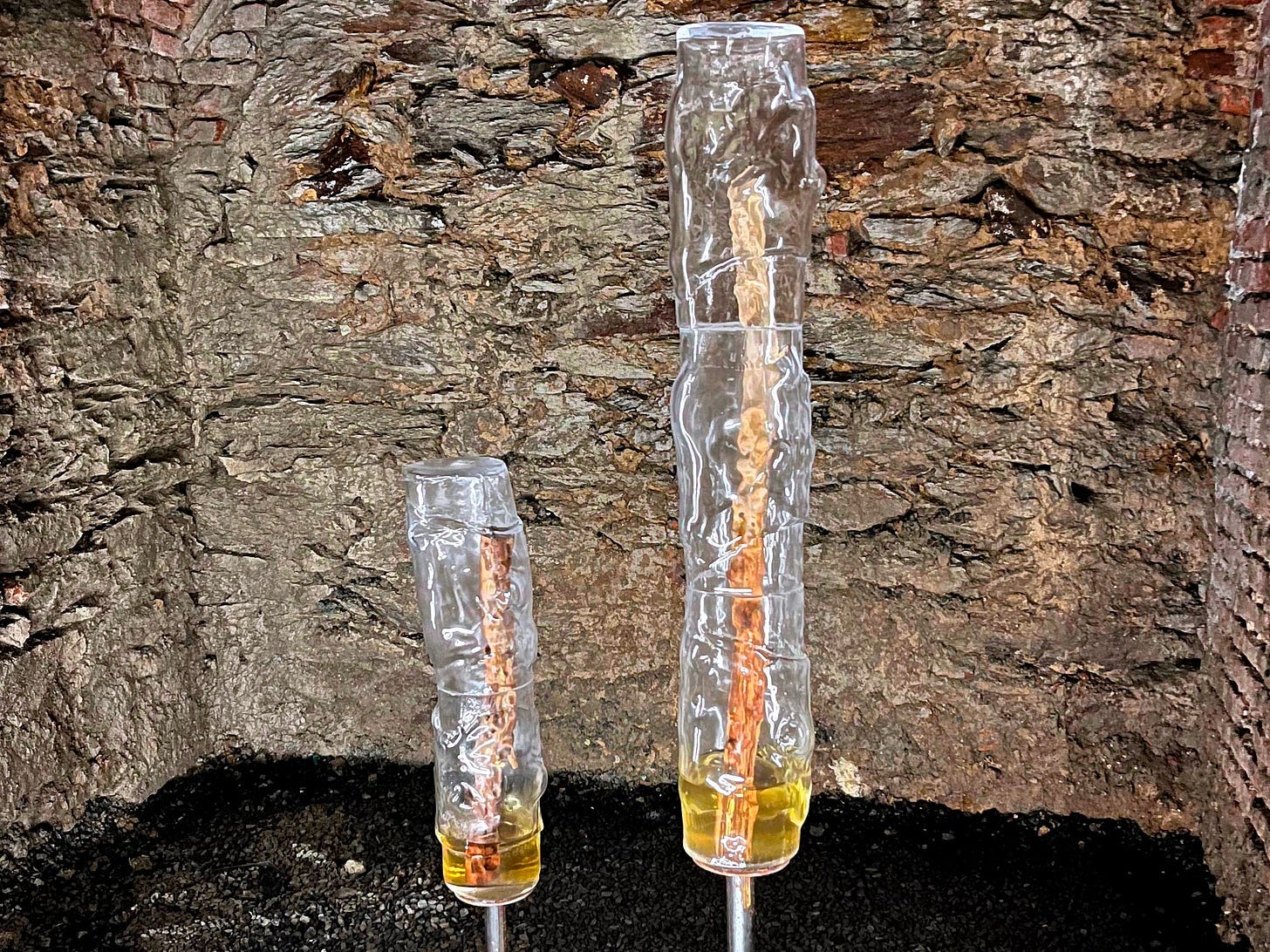✨ This is a research-based speculative fiction. Read this story first: A future shaped by living materials.
Fast forward to 2056, and as I’m taking notes at my desk, I catch a glimpse of something odd: my lamp seems dimmed. It’s not a citywide blackout or a malfunction in our smart grid. It happens to be Billy, our living bio-battery, quietly signaling that it needs extra nourishment to keep powering our house.
I head to the utility room where Billy sits as a work of living art, encased in a transparent shell of organically blown glass. Inside, an intricately 3D-printed lattice of cellulose forms a miniature circuit board. Along these channels, yeast cells cluster at one end, burning sugar to release electrons. These electrons travel along the network, carried by natural chemicals that act like microscopic couriers. At the opposite end, fine thread-like filamentous fungus use special enzymes to capture these electrons, completing a seamless energy cycle. This natural process is what powers Billy.
Billy’s sensors show that its energy output has dropped sharply because its microbes are starving. To help, I inject a mixture of cellulose and other organic ingredients.
While watching the power climbs back up, I reflect on the bigger picture. In 2024, bio-batteries produced only about 12.5 μW per square centimeter. A very small amount of energy that could barely lit up a single sensor. Powering a small house would have meant covering an entire building with 8000 m² of these living electrodes. But now, in 2056, thanks to breakthroughs in genetic engineering and more efficient electrode designs, bio-batteries’ output has increased a hundredfold. Though even 80 m² of electrode area remains significant, this dramatic leap now allows a compact, wall-mounted array to generate enough power to light up my home.
To achieve this, the system was refined on every front. Scientist genetically tweaked the yeast and fungi so that these tiny powerhouses could overproduce the enzymes needed to directly send electrons to the electrode, channeling almost all their energy into electricity instead of other cellular chores. Meanwhile, the electrodes were transformed too. They were crafted with nanomaterials and built into 3D-printed fractal structures that dramatically multiplied their surface area provided far more spots for the microbes to latch onto and transfer electrons. Additionally, engineers optimized the chemical shuttles that carry electrons from the microbes to the electrodes and reduced internal resistances, ensuring that the energy flow was as smooth as possible. The system was further optimised by smart nutrient delivery, keeping the microbes in peak condition. Together, these innovations boosted Billy’s power output, making it a true marvel of living energy.
When I return to my desk, a new thought strikes me. Perhaps the fungus itself is beginning to age. Over time, even the most robust living systems lose their vitality. A slowdown in the fungus’s metabolism might affect its ability to capture electrons. As much as I love Billy, I hate to maintain him. So, how do we deal with aging fungi?
One possibility is automated rejuvenation. Gene circuits of the fungal cells could be engineered to initiate self-repair once their performance starts to drop. Alternatively, we could design Billy with a modular architecture. Sections of the fungal network could be automatically swap out for fresh, high-performance cells. With smart nutrient networks and AI-driven monitoring, the system could adapt and renew without human intervention.
As I scribble down a few final ideas, I wonder how I can make Billy truly autonomous, truly everlasting.





Senescence